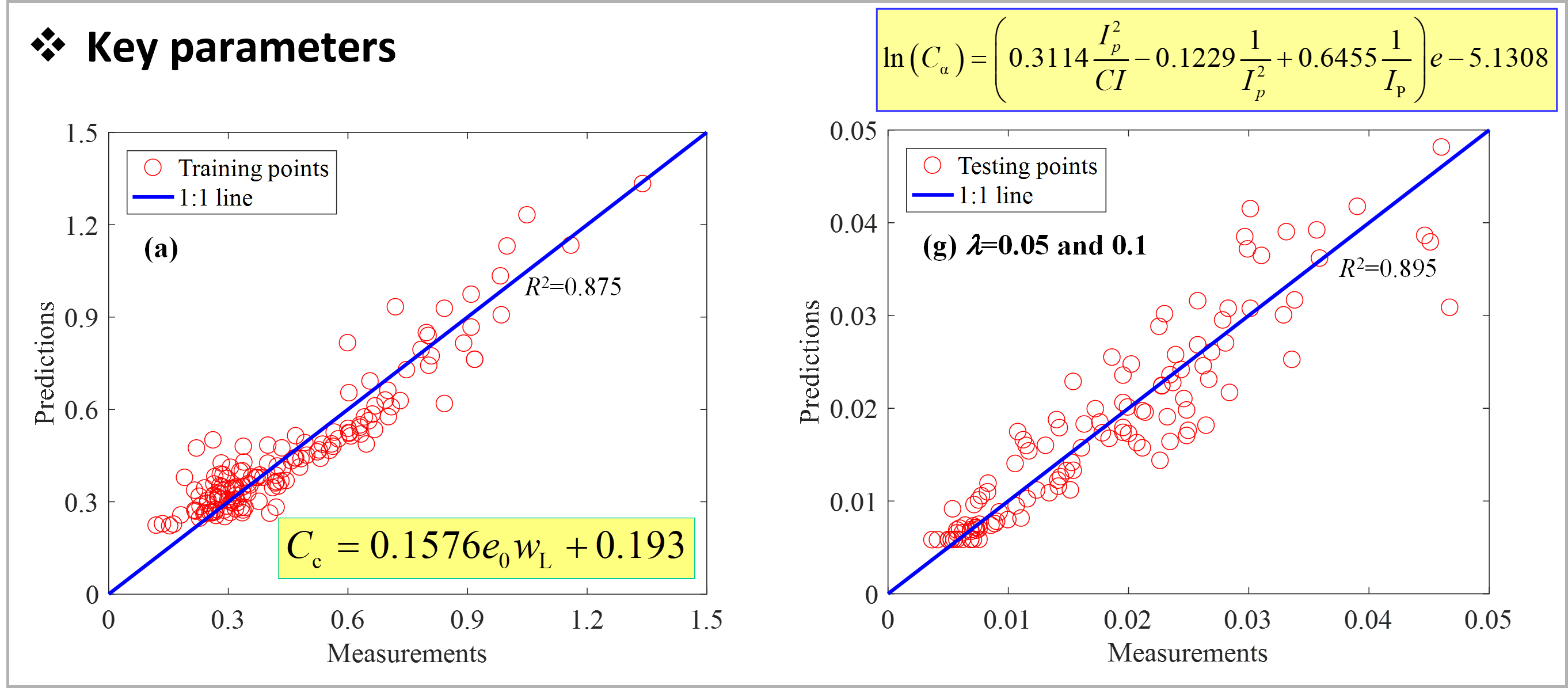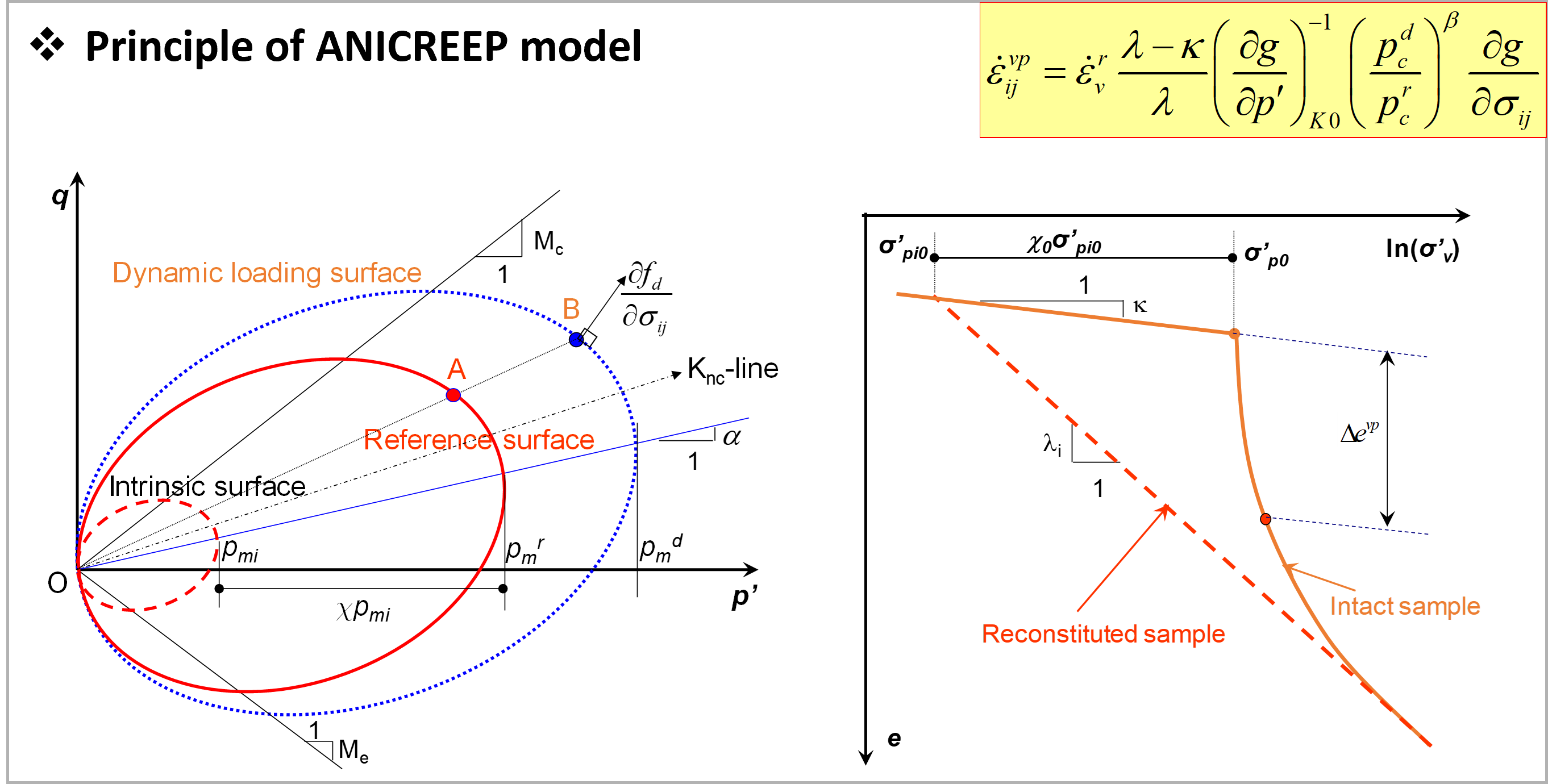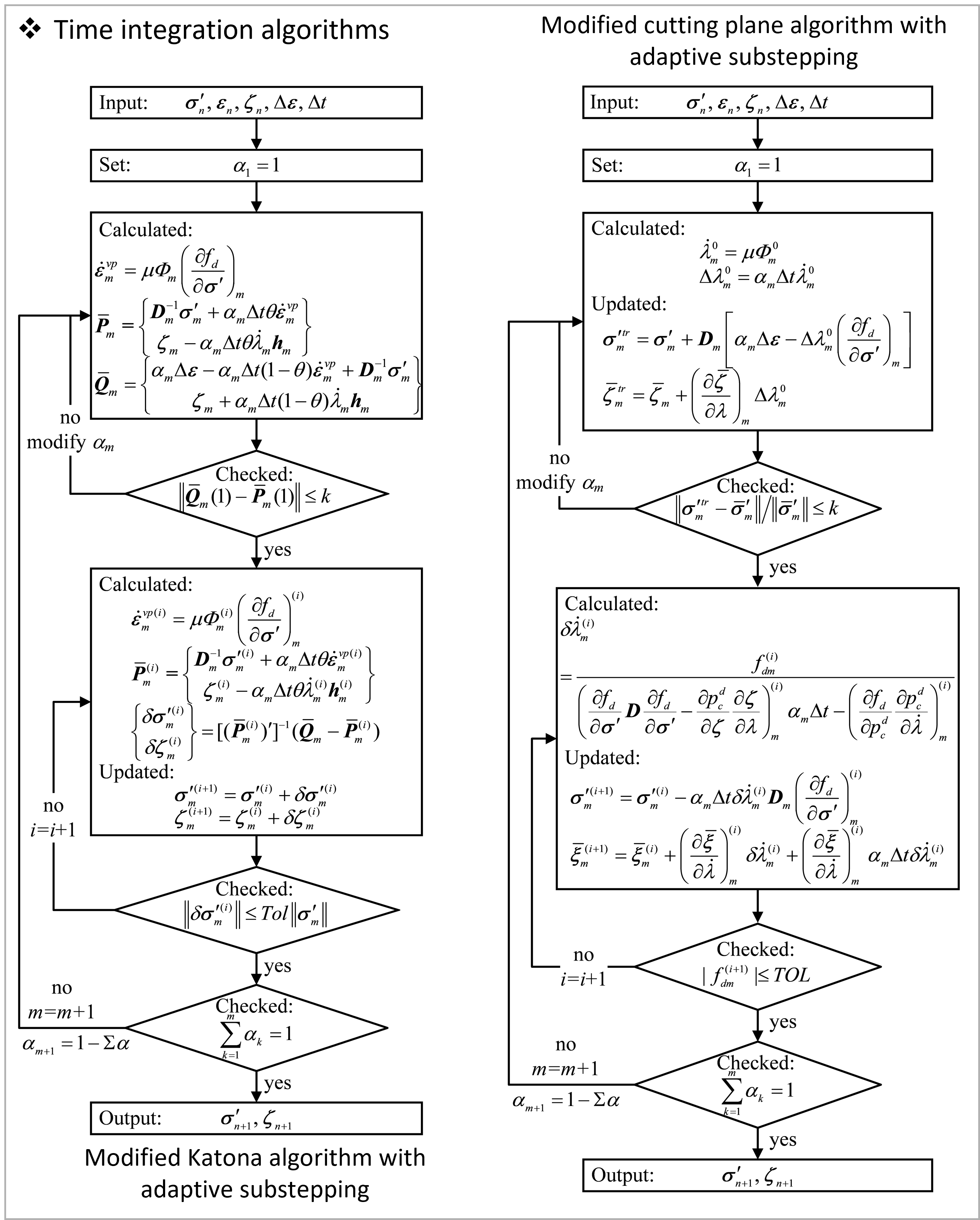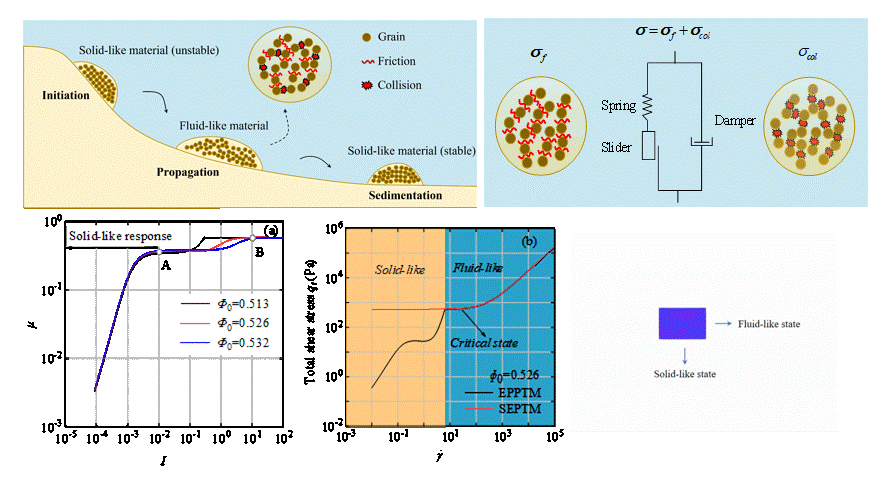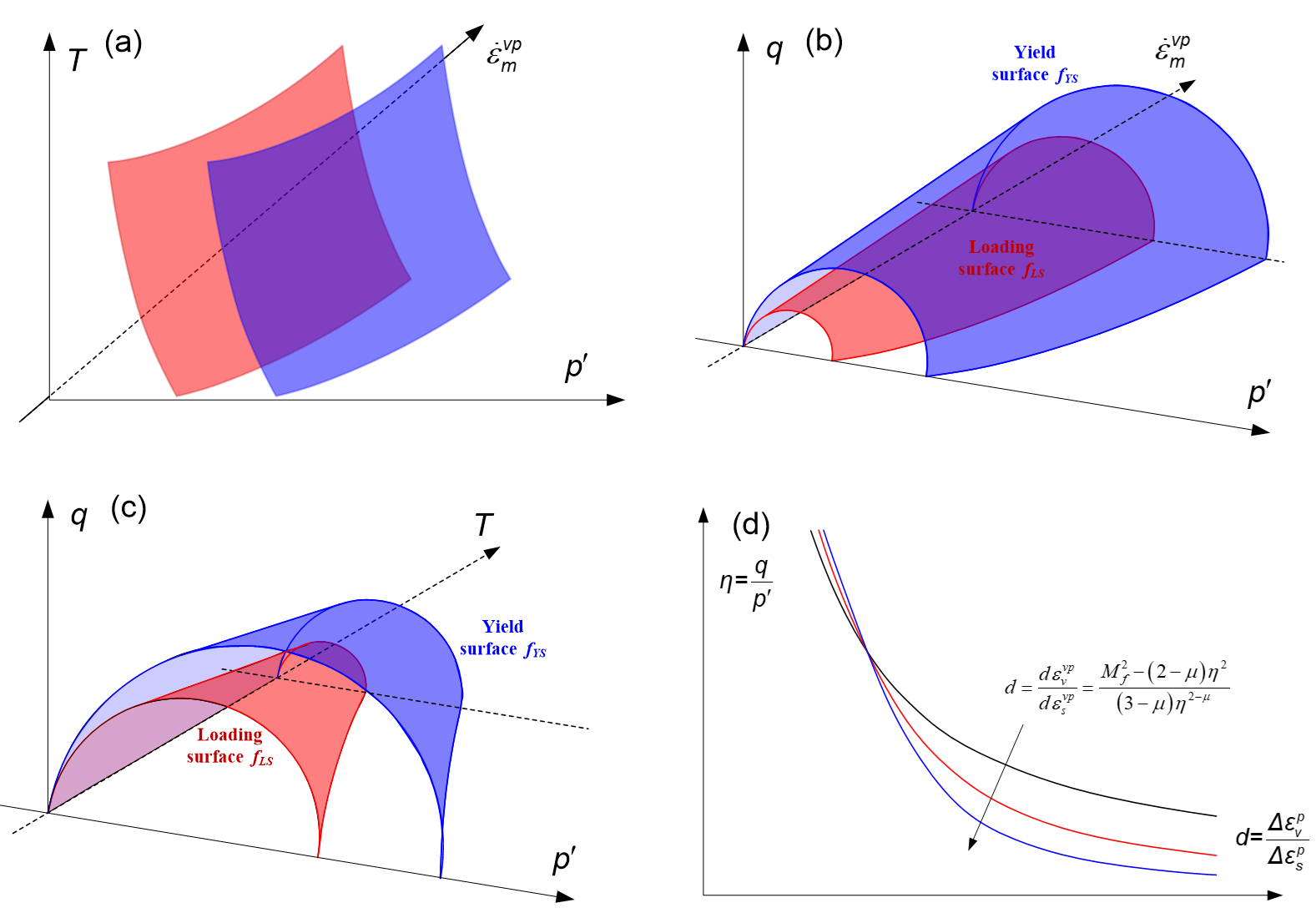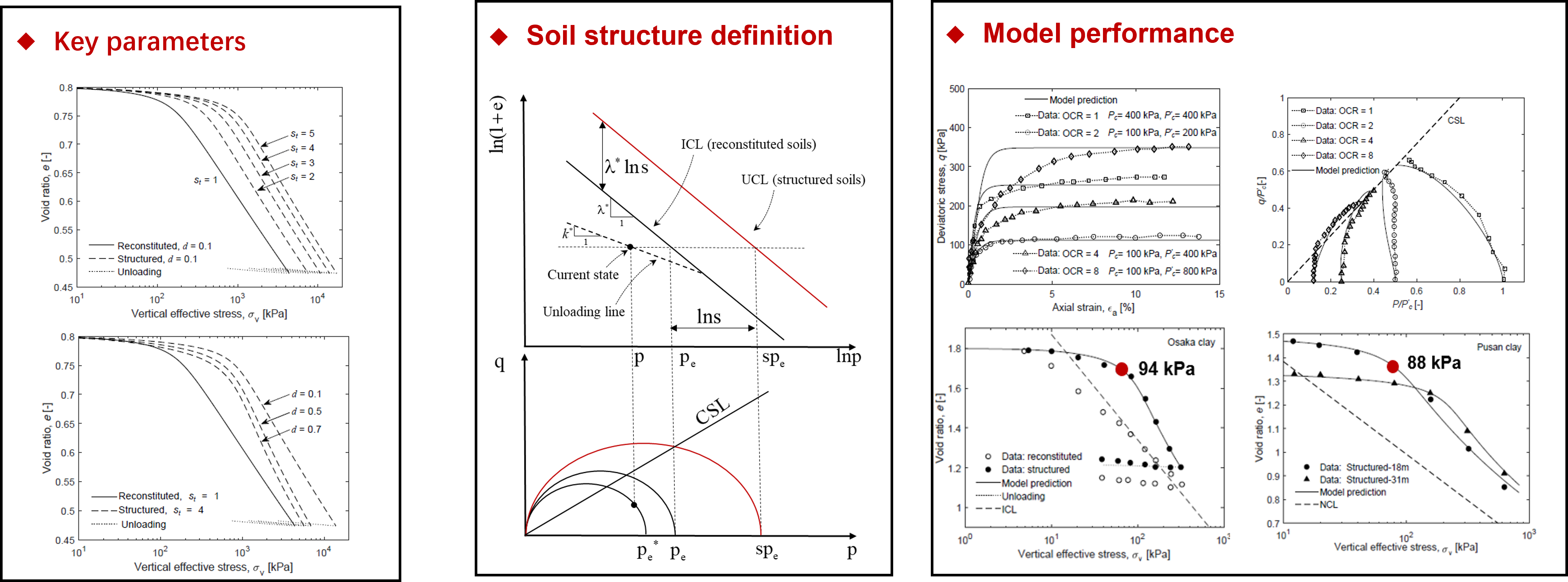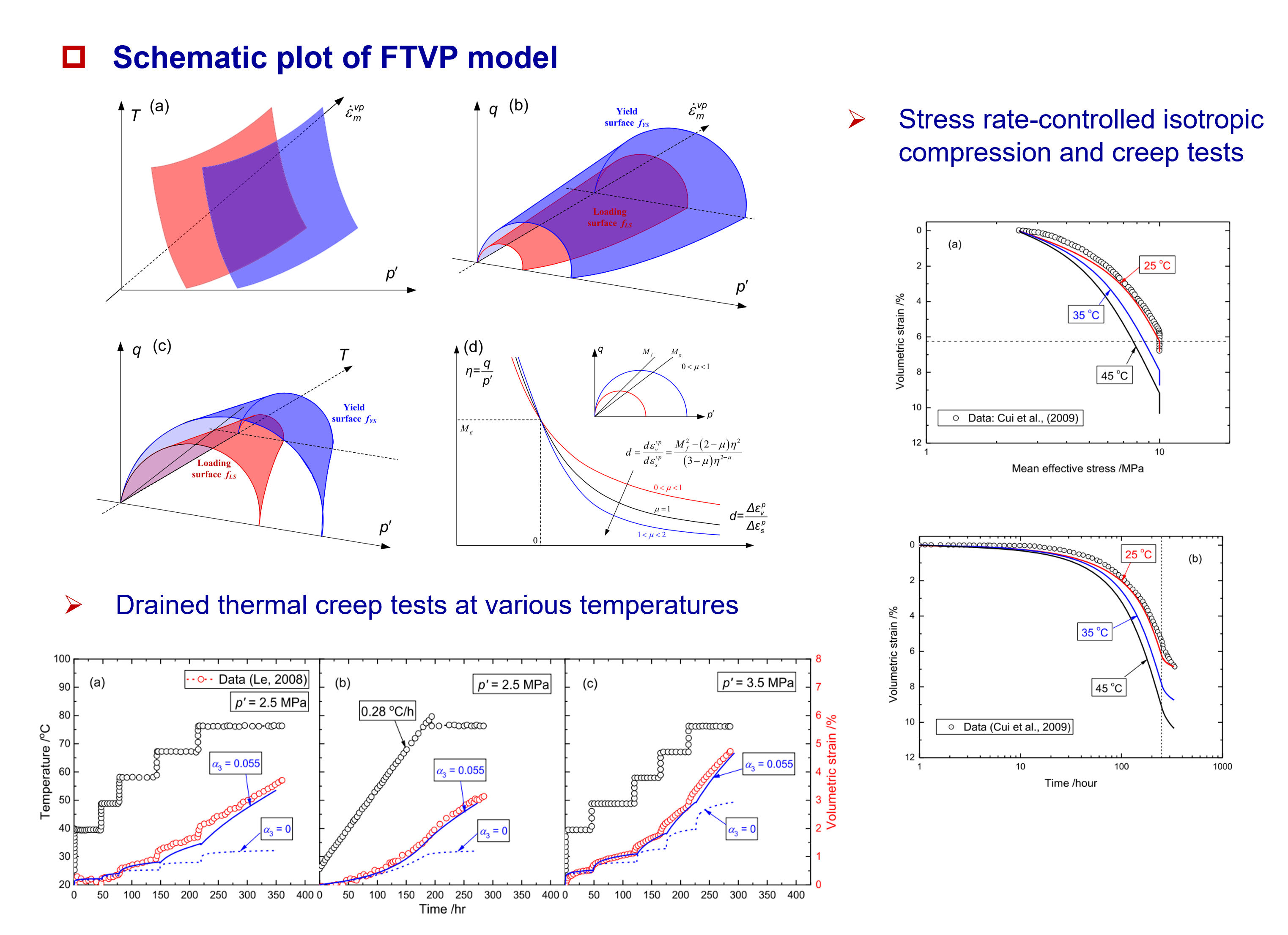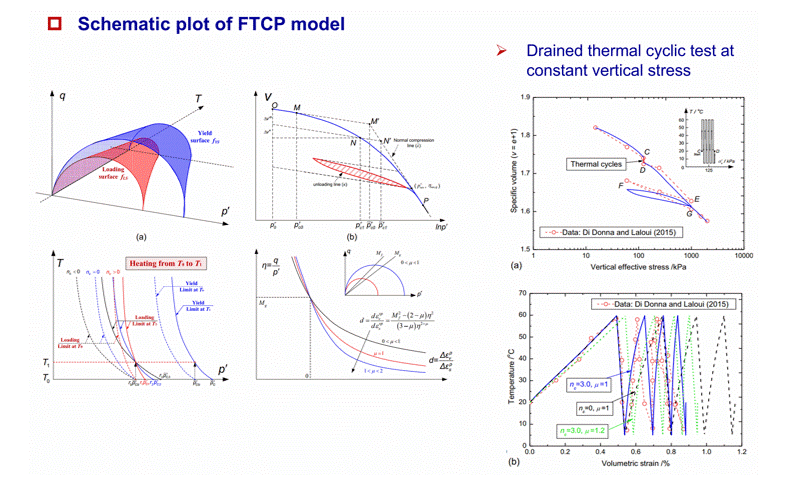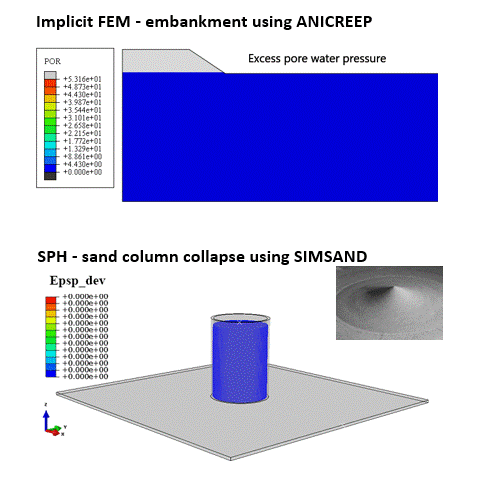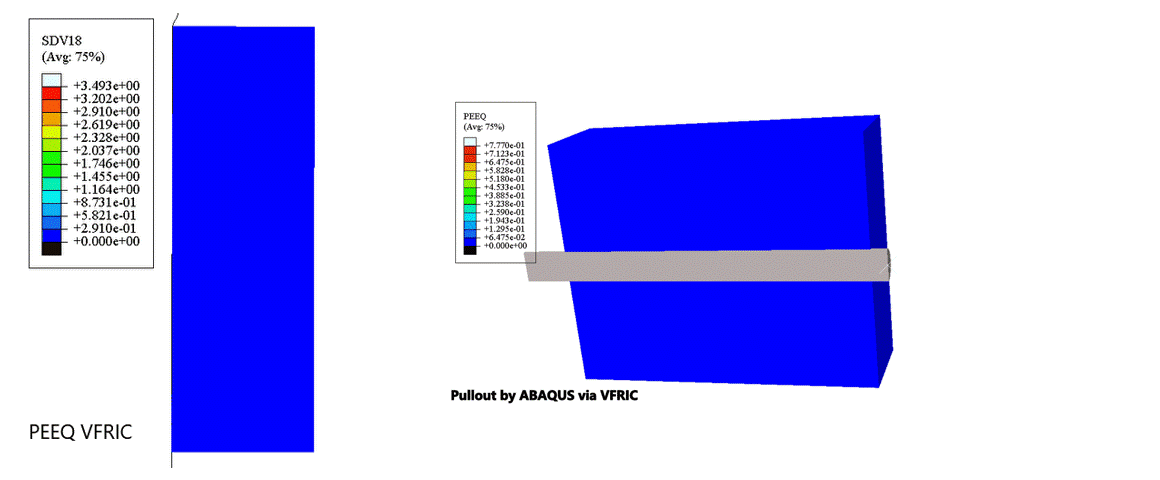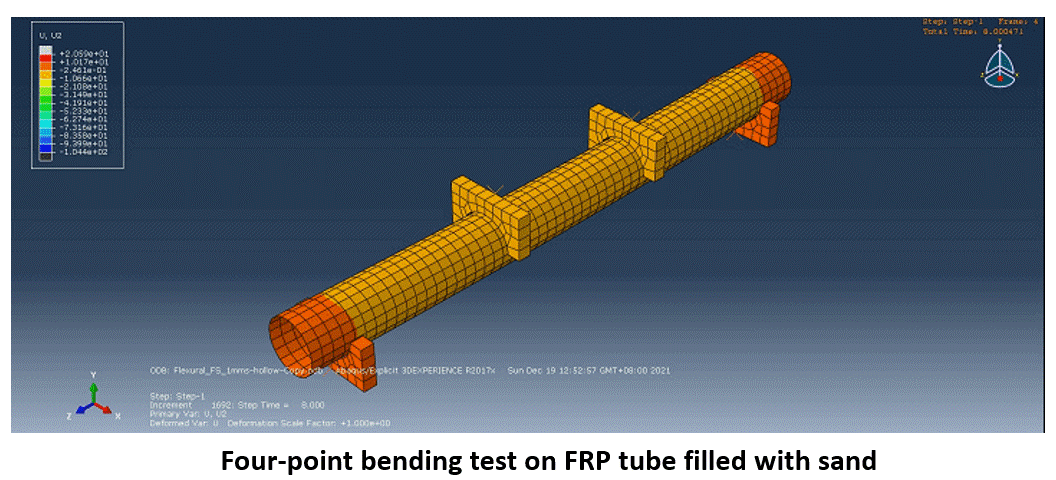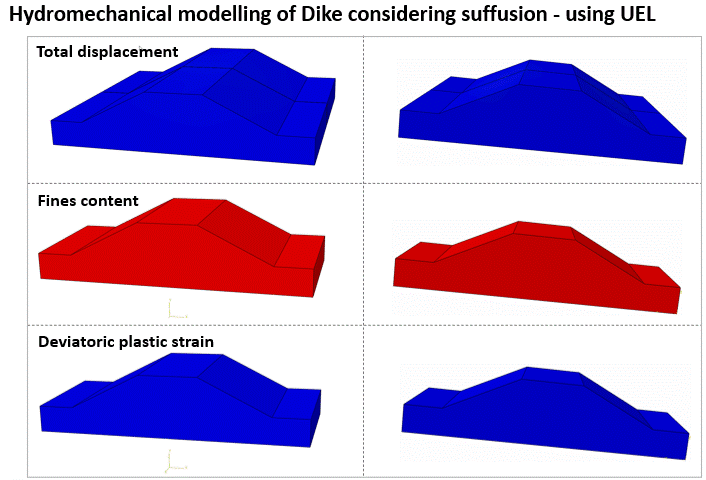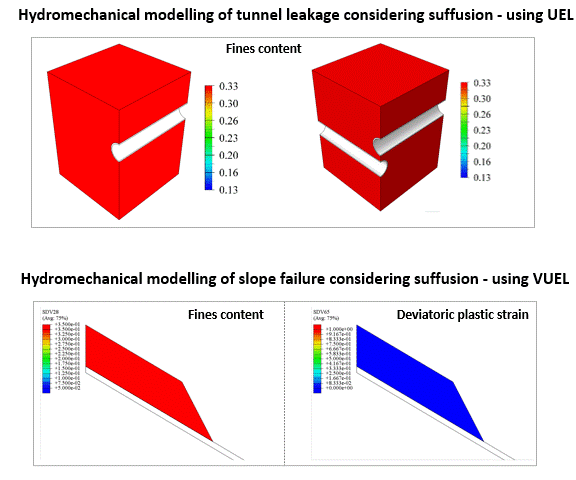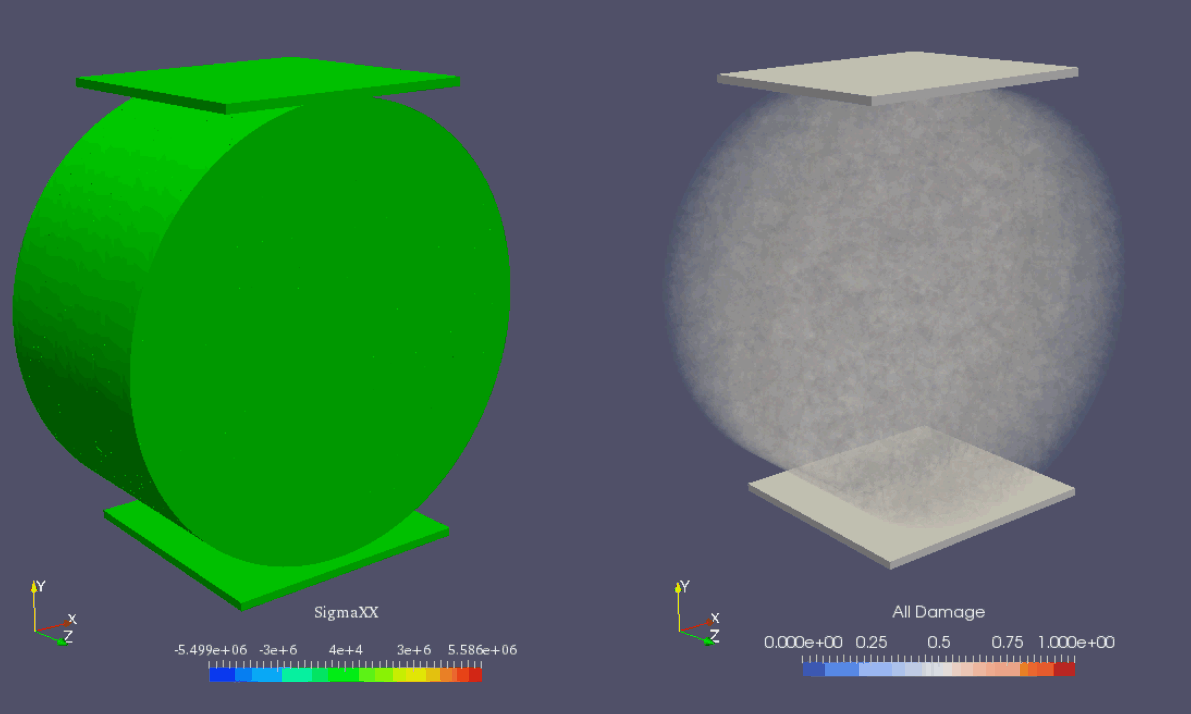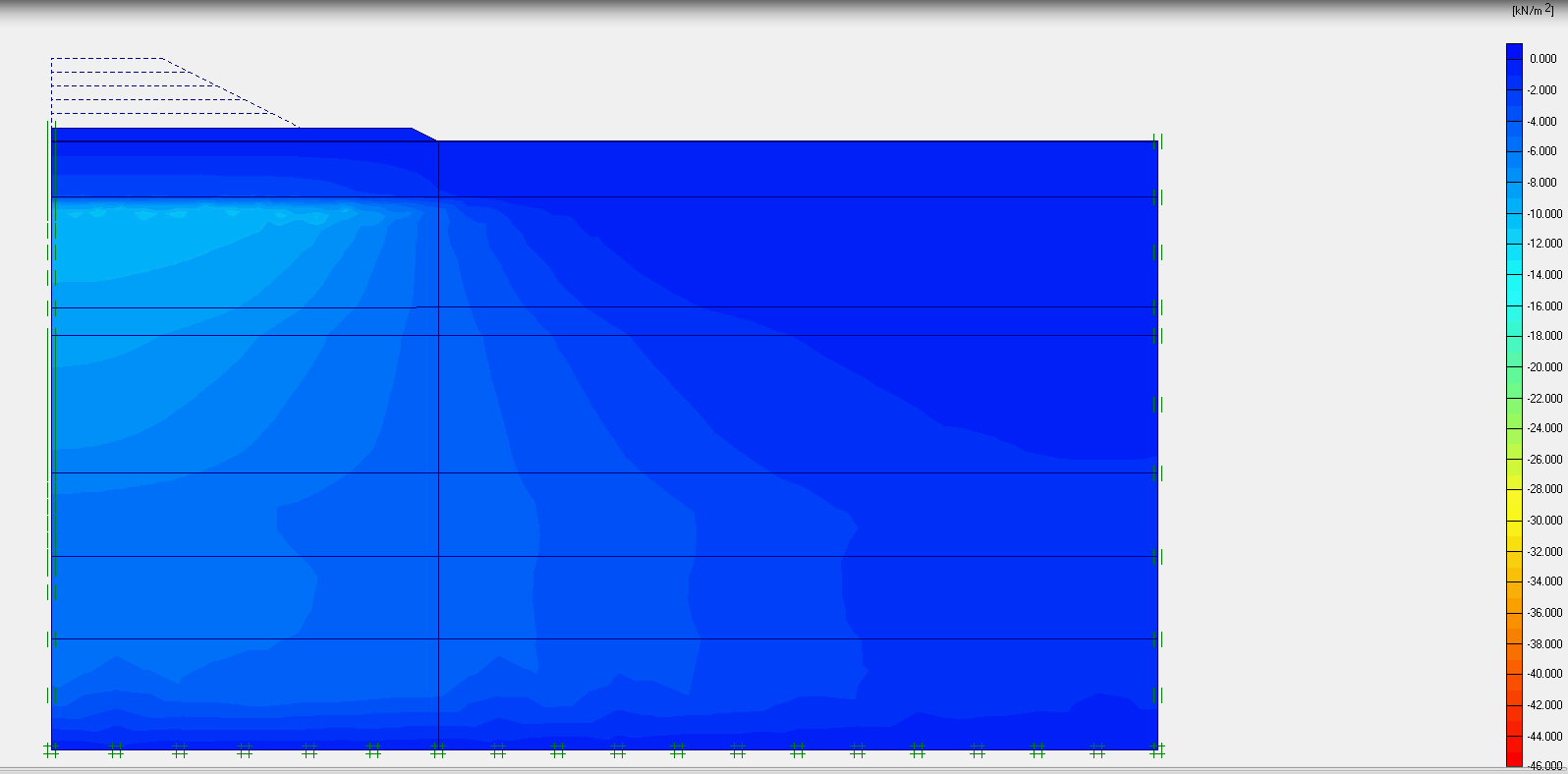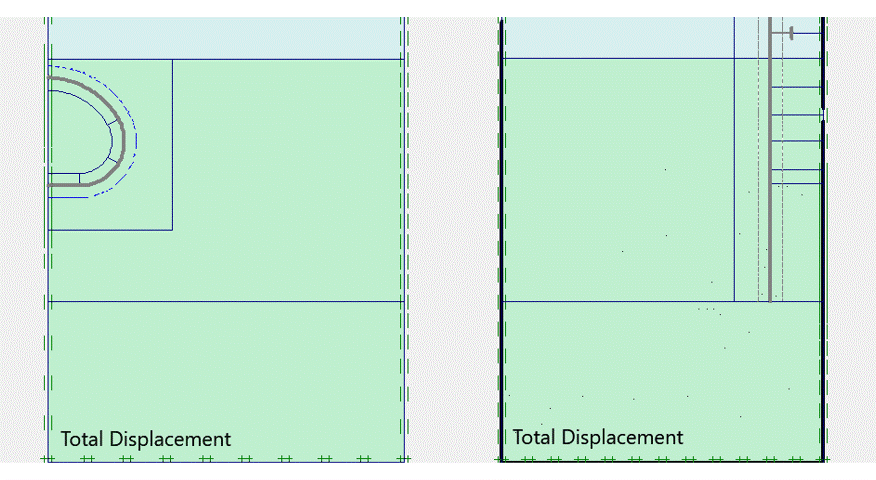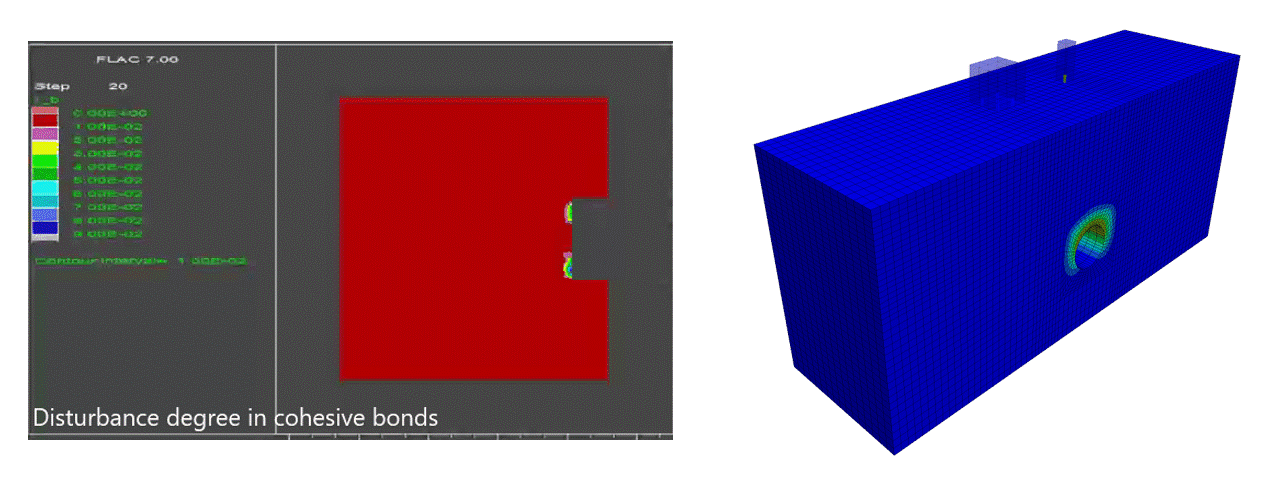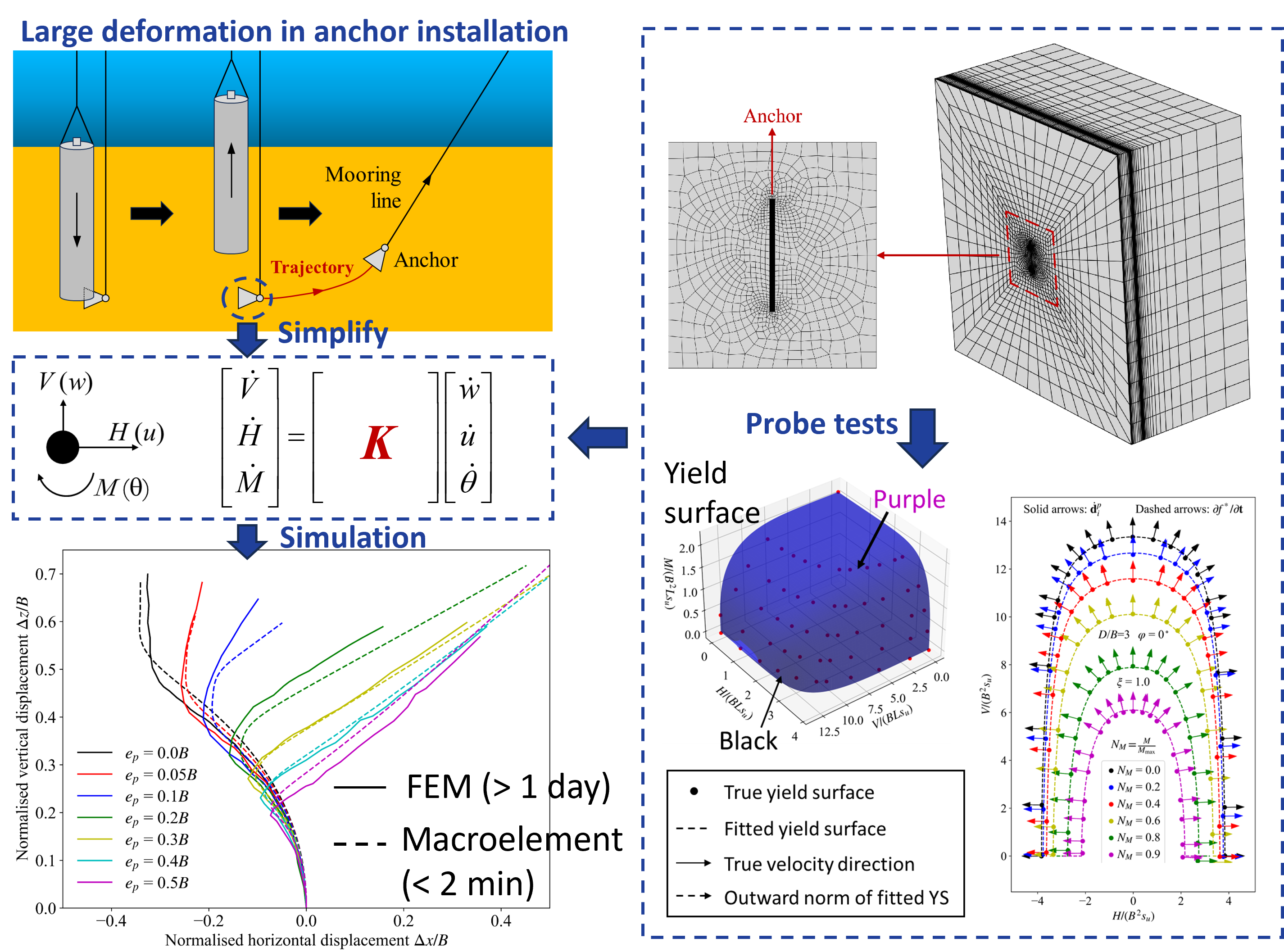Introduction
The constitutive modelling of soils is a fundamental pillar of advanced geotechnical analysis, aiming to mathematically represent the complex and unique stress-strain behaviour of soil under various loading paths and drainage conditions. Unlike simpler engineering materials, soil exhibits a host of intricate characteristics including nonlinearity, inelasticity, pressure-dependence, dilatancy, path-dependency, time-dependency, and temperature-dependency, which cannot be captured by elementary elastic models. Constitutive models are therefore developed as sets of equations that define these relationships, ranging from relatively simple frameworks like Mohr-Coulomb to more sophisticated critical state-based models such as Cam-Clay and its modern descendants. The primary challenge lies in creating a model that is both realistically representative of the soil's observed behaviour and computationally efficient for practical application in numerical simulations. A well-calibrated constitutive model is crucial for predicting real-world geotechnical performance, enabling engineers to more accurately forecast settlements, assess stability, and understand failure mechanisms in geotechnical structures.
Natural soft clays exhibit several features: (a) significant anisotropy developed during their deposition, sedimentation, consolidation history and any subsequent straining; (b) some apparent bonding which will be progressively lost during straining; and (c) time-dependent stress-strain behaviour which has a significant influence on the shear strength and the pre-consolidation pressure. Since all these features cannot be neglected, in the modelling we considered all above features. The application of the proposed model ANICREEP requires the same experimental information as needed for the Modified Cam Clay model, which makes the model attractive for geotechnical practice.
Dynamic bounding surface and new overstress function �for OC clay and cyclic behaviours
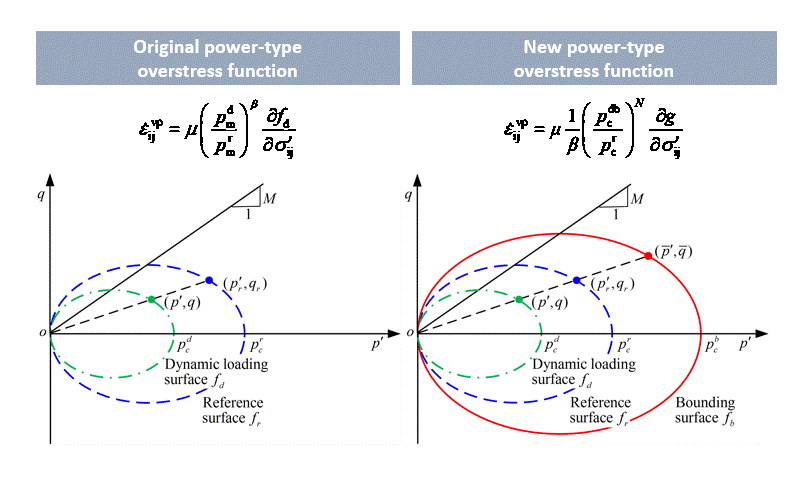
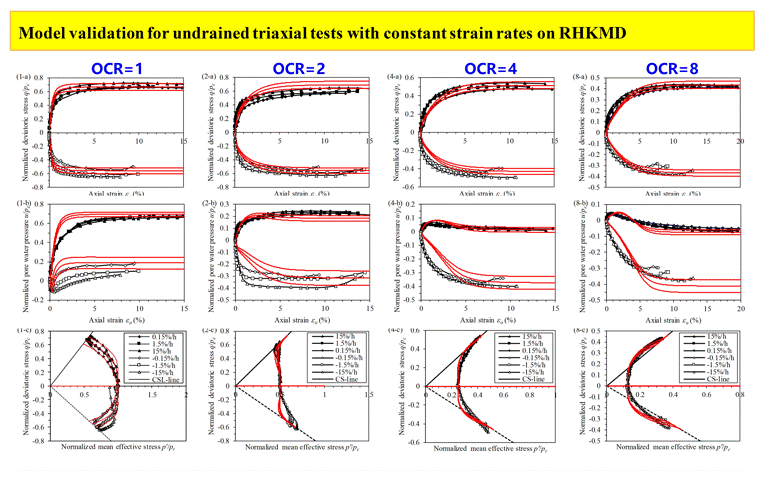
- Li J, Yin Z-Y (2021). Time integration algorithms for elasto-viscoplastic models with multiple hardening laws for geomaterials: enhancement and comparative study. Arch. Comput. Methods Eng., 28: 3869–3886.
- Li J, Yin Z-Y (2020). A modified cutting-plane time integration scheme with adaptive substepping for elasto-viscoplastic models. Int. J. Numer. Meth. Eng., 121(17): 3955-3978.
- Jin YF, Yin Z-Y, Zhou WH, Yin JH, Shao JF (2019). A single-objective EPR based model for creep index of soft clays considering L2 regularization. Eng. Geol., 248(8): 242-255.
- Yin Z-Y, Zhu QY, Yin JH, Ni Q (2014). Stress relaxation coefficient and formulation for soft soils. Géotech. Lett., 4(1): 45-51.
- Yin Z-Y, Karstunen M, Chang CS, Koskinen M, Lojander M (2011). Modeling time-dependent behavior of soft sensitive clay. J. Geotech. Geoenviron. Eng. ASCE, 137(11): 1103-1113.
- Yin Z-Y, Chang CS, Karstunen M, Hicher PY (2010). An anisotropic elastic viscoplastic model for soft clays. Int. J. Solids Struct., 47(5): 665-677.
RETURN
Mechanical properties/behaviours are significantly affected by the grain size distribution of the granular soil, which is called “grading-dependency”. The grading change can be induced by grain breakage. Bigger sized grains are easier to be crushed. If the soil is gap-graded, the change of fines content can be induced by seepage force so-called suffusion/internal erosion. Currently, we focuses on how the soil grading evolves, what is mechanical consequence, and how to model the full coupling for engineering design.

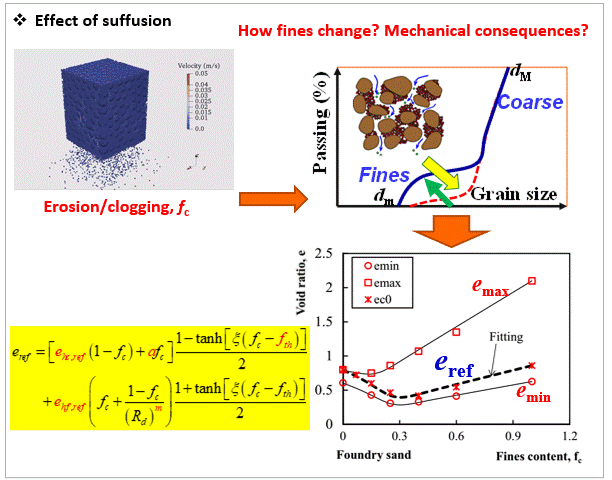

- Yin Z-Y (2021). Constitutive Theory of Granular Soils and Application. China Architecture Press, Beijing.
- Yin Z-Y, Hicher P-Y, Jin YF (2020). Practice of constitutive modelling for saturated soils. Springer, Singapore.
- Yin Z-Y, Hicher PY, Dano C, Jin YF (2017). Modeling the mechanical behavior of very coarse granular materials. J. Eng. Mech. ASCE, 143(1): C401600.
- Yin Z-Y, Huang HW, Hicher PY (2016). Elastoplastic modeling of sand-silt mixtures. Soils Found., 56(3): 520–532.
- Hu W, Yin Z-Y, Dano C, Hicher PY (2011). A constitutive model for granular materials considering grain breakage. Sci. China Technol. Sc., 54(8): 2188-2196.
Solid-to-fluid phase transition model of noncohesive soils
- Feng, H., & Yin, Z. Y. (2025). Enhanced elastoplasticity-based frictional-collisional model for solid–fluid phase transition of granular media. Computers and Geotechnics, 183, 107218.
- Feng, H., Yin, Z. Y., & Liang, W. (2025). A novel unified elastoplasticity-μ (I) phase transition model for granular flows from solid-like to fluid-like states and its application. Engineering Geology, 352, 108054.
- Feng, H., Liang, W., Yin, Z. Y., & Hu, L. (2025). Material Point Method Modeling of Granular Flow Considering Phase Transition From Solid‐Like to Fluid‐Like States. International Journal for Numerical and Analytical Methods in Geomechanics, 49(6), 1642-1664.
RETURN
Modeling rate-dependent thermo-mechanical behaviors of saturated clays and solving related boundary value problems are crucial for temperature-sensitive geotechnical engineering applications. The three relevant key points are as follows: 1) Advanced constitutive models that better reflect the complex thermo-mechanical behaviors of clays. 2) Efficient stress updating algorithms based on mathematical optimization theory that are applicable to the relevant constitutive models.
Unified computational frameworks that integrates model and element scales, along with high-performance optimization algorithms.
- Cheng, W., Chen, R.P., Yin, Z.Y., Wang, H.L. and Meng, F.Y., 2023. A fractional-order two-surface plasticity model for over-consolidated clays and its application to deep gallery excavation. Computers and Geotechnics, 159, p.105494.
- Cheng, W. and Yin, Z.Y., 2024. Fractional order viscoplastic modeling of anisotropically overconsolidated clays with modified isotach viscosity. International Journal of Plasticity, 172, p.103858.
- Cheng, W., Yin, Z. Y., Cui, Y. J., and Peng, M. Z., Non-isothermal Fractional Order Two-surface Viscoplastic Model for Stiff Clays. Canadian Geotechnical Journal, Under review.
RETURN
As an alternative to the prevailing elastoplasticity theory, incrementally non-linear constitutive models have gained much popularity in recent years. These models are developed without recourse to some concepts in elastoplasticity, such as plastic potential and yield surface. Consequently, they offer advantages including fewer model parameters and easy numerical implementation. The commonly used nonlinear incremental models are the hypoplastic model and the exponential function-based model. Within these model frameworks, some complex geomechanical behaviours of soils under various loading conditions can be effectively simulated.
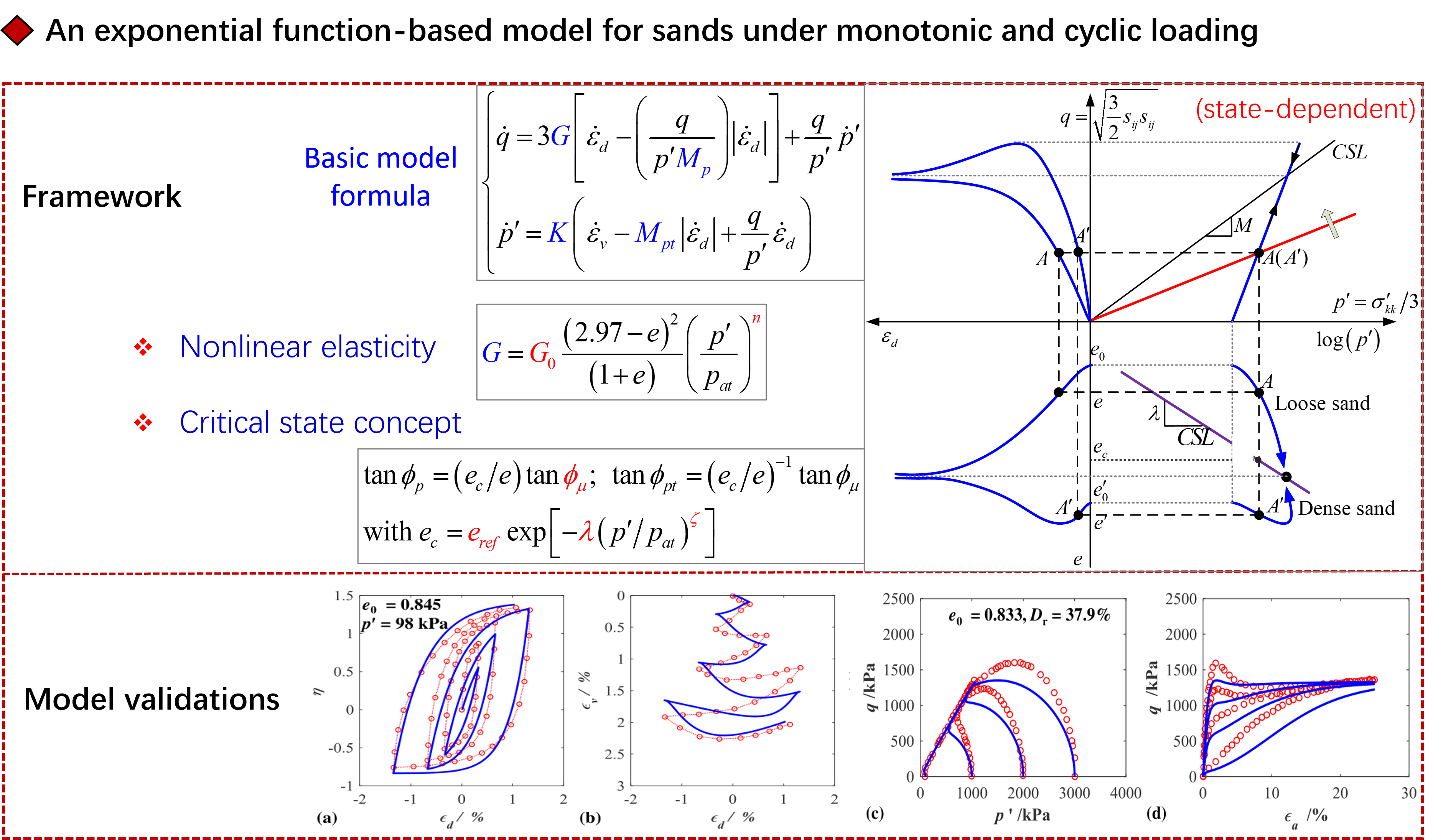
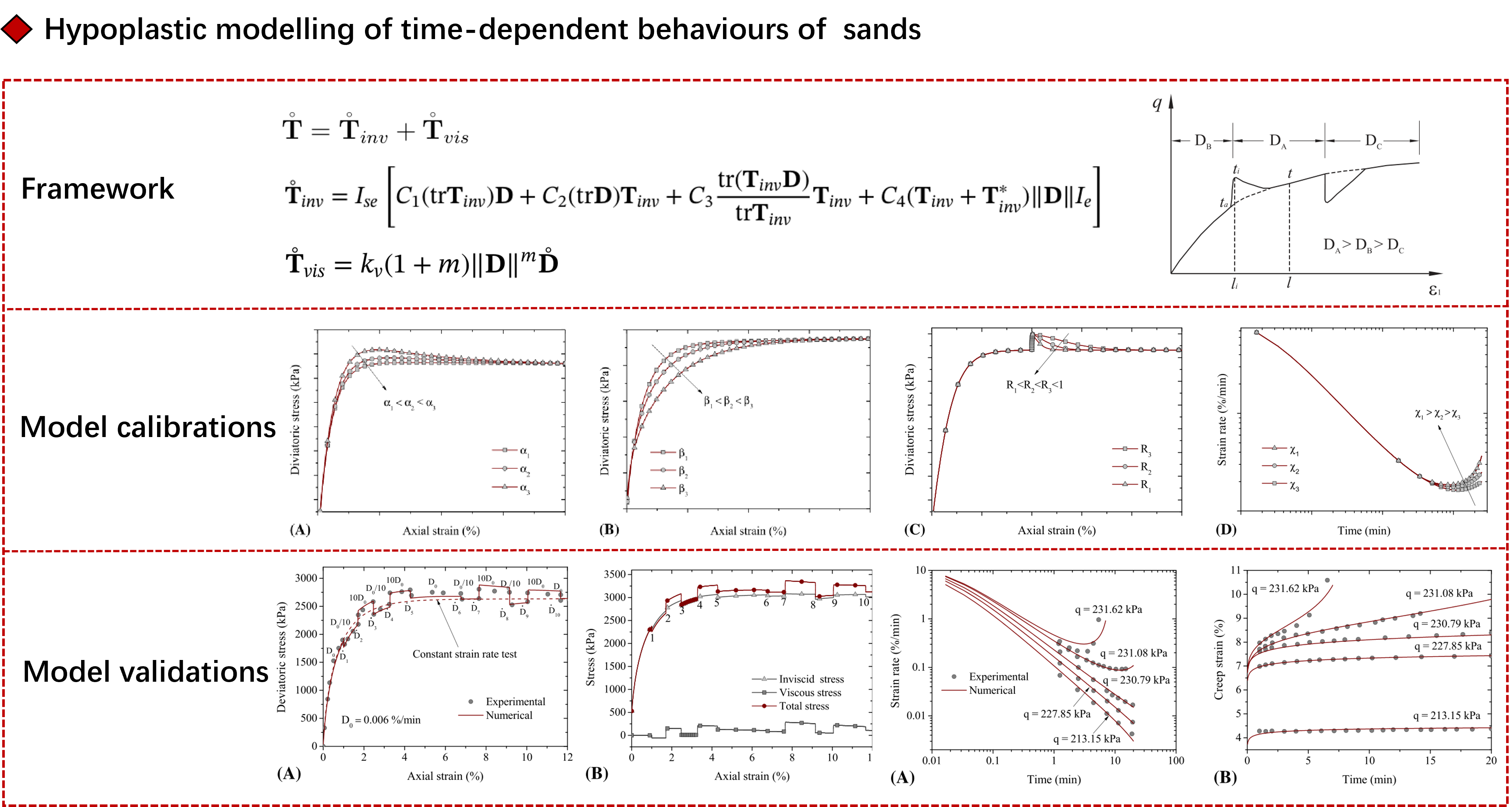
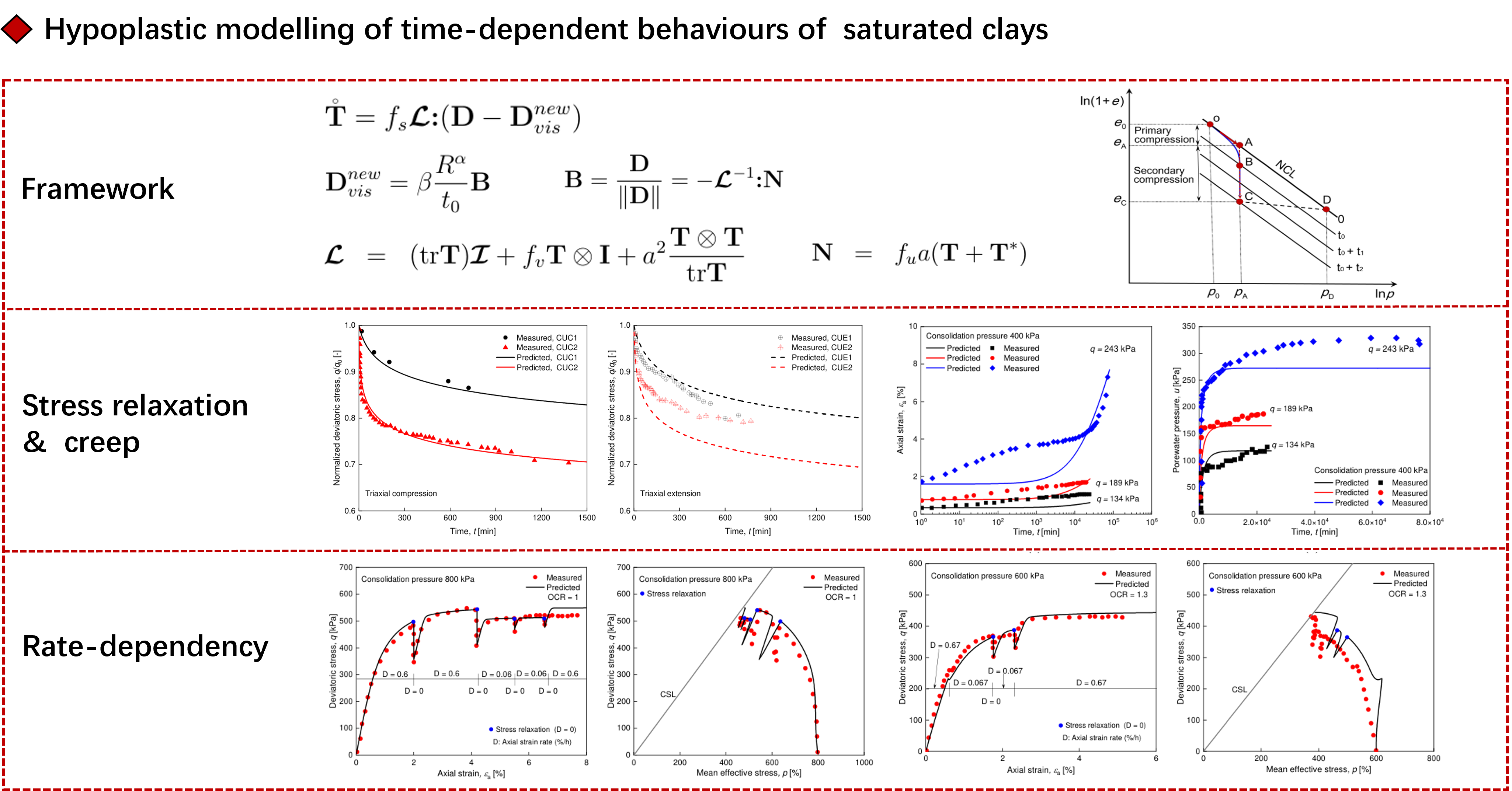
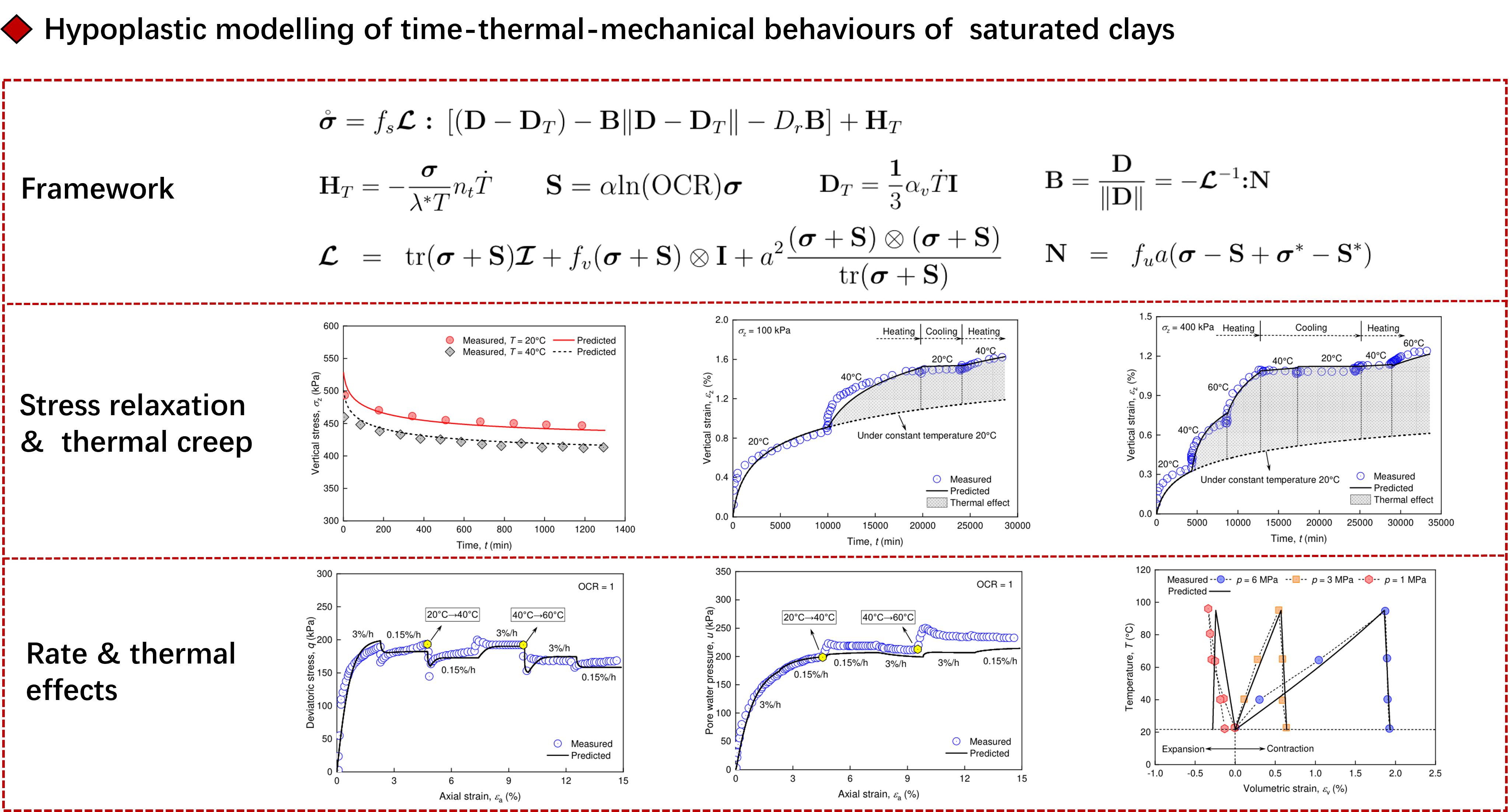

- Yin Z-Y, Wu Z-Y, Hicher P-Y (2018). Modeling the monotonic and cyclic behavior of granular materials by an exponential constitutive function. J. Eng. Mech. ASCE, 144(4): 04018014.
- Wang S, Wu W, Yin Z-Y, Peng C, He X-Z (2018). Modelling time-dependent behaviour of granular material with hypoplasticity. Int. J. Numer. Anal. Methods Geomech., 42(12): 1331-1345.
- He Y-Q, Yin Z-Y, Wang S. A visco-hypoplastic model for normally consolidated and overconsolidated clays[J]. Canadian Geotechnical Journal, 2025, 62: 1-18.
- He Y-Q, Yin Z-Y. Micropolar hypoplasticity modeling of localized deformation in mixtures of face mask chips and sand[J]. Computers and Geotechnics, 2025, 183: 107173.
RETURN
The characterization of the soil-structure interface (SSI) is a critical issue in geotechnical engineering. We have evaluated some frequently recognized interface behaviors with six different interface models (exponential model, hyperbolic model, hypoplastic model, MCC model, SANISAND model and SIMSAND model) under both monotonic and cyclic loadings. Key highlights include: (1) a framework of uncertainty quantification based on a simplified two-dimensional Monte Carlo simulation is proposed to extract uncertainties of soil properties from interface experiments; (2) comparisons and effects of the soil density, normal stiffness, and shearing rate were investigated to evaluate the interface models; (3) the irreversible normal displacement remains stable and is solely influenced by the soil properties rather than the stress level.
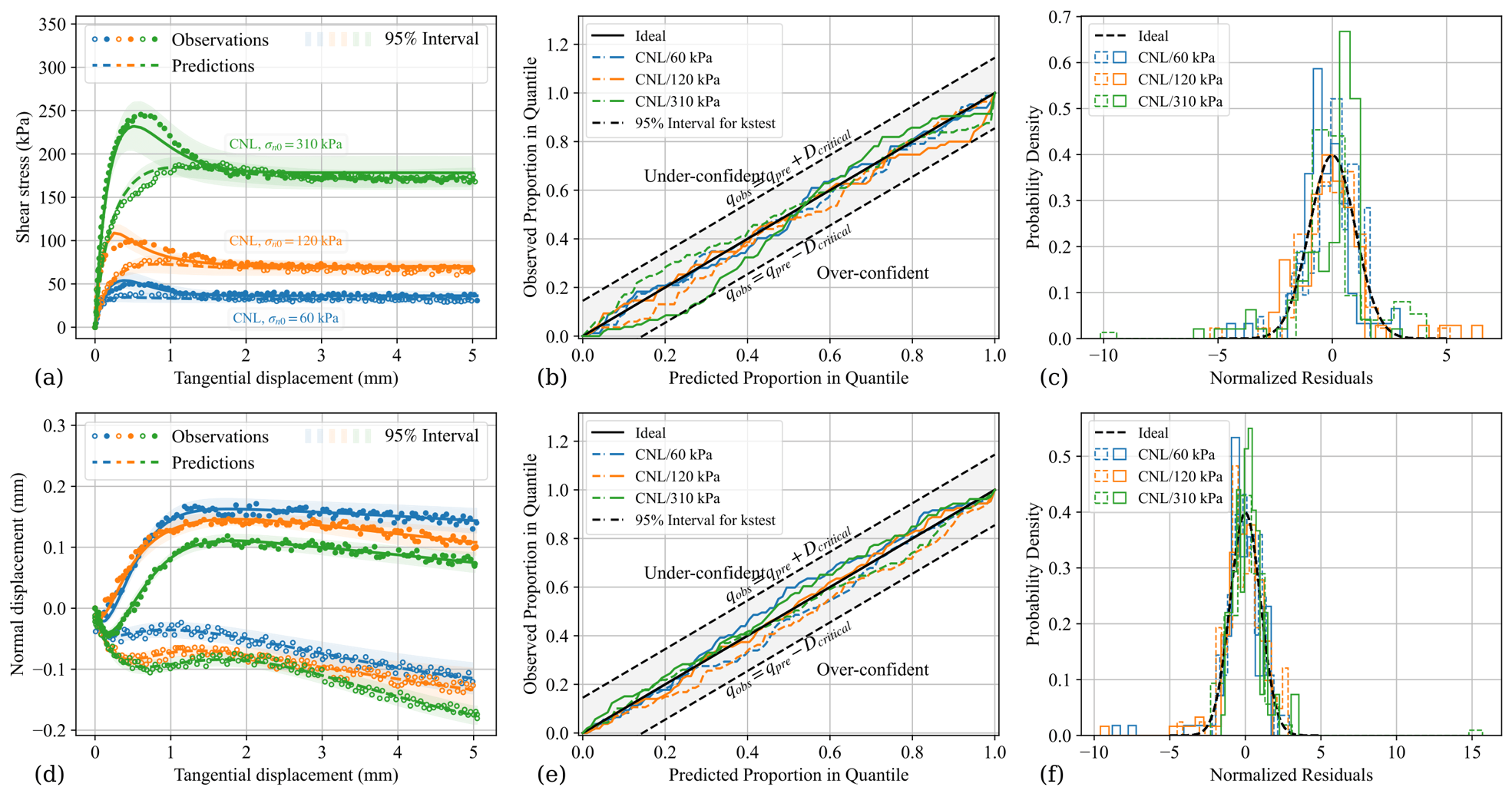
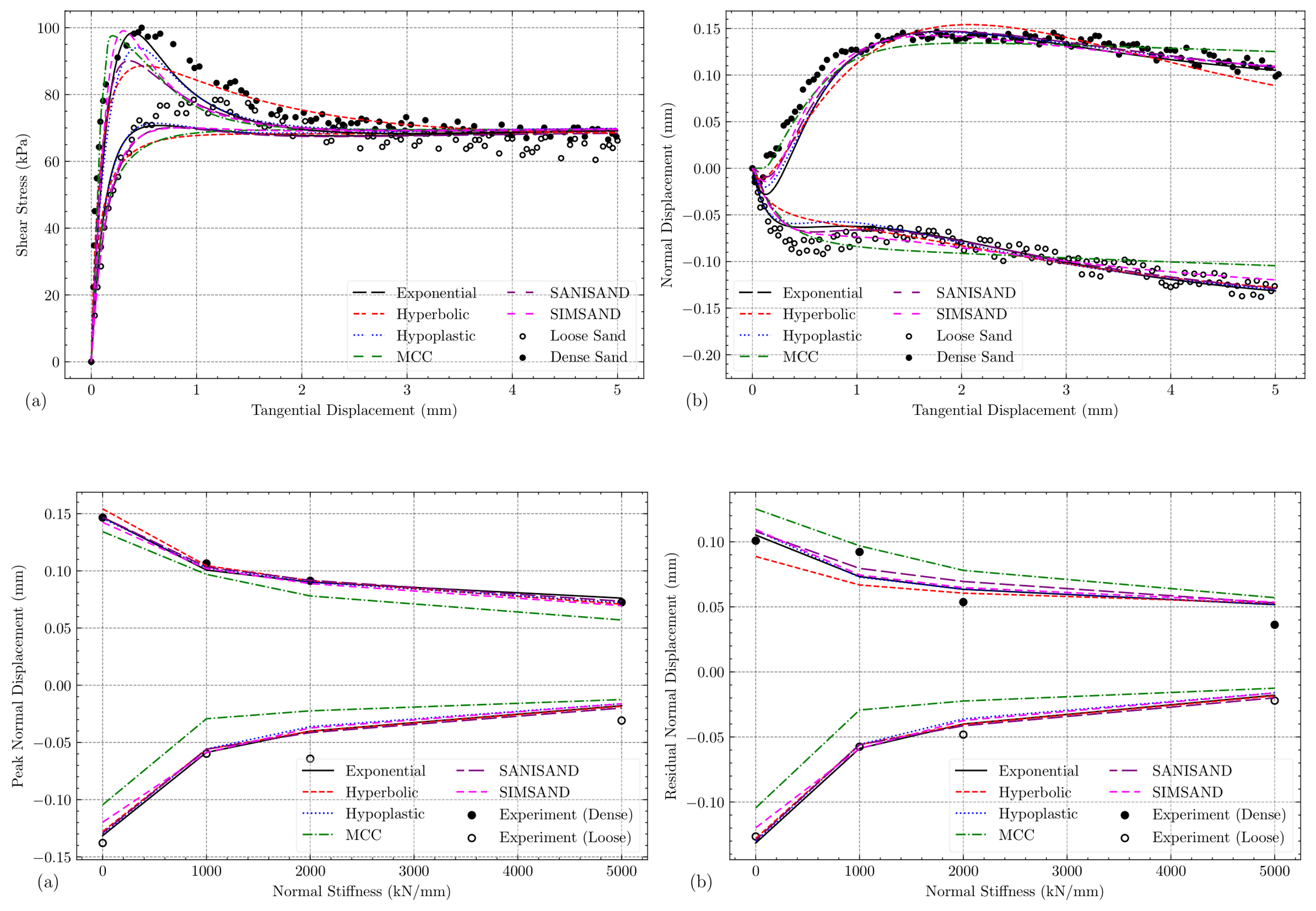
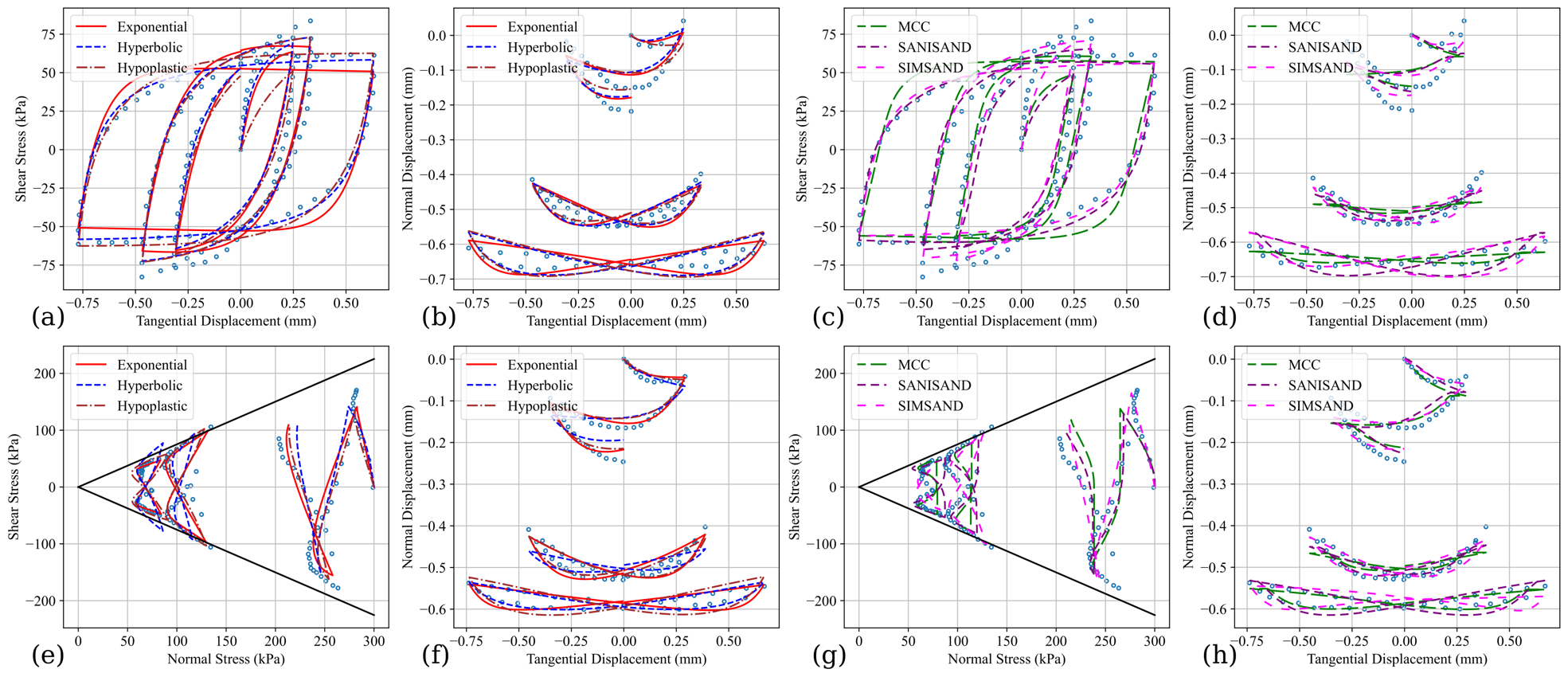
- Yang, J., & Yin, Z.-Y. (2021). Soil-structure interface modeling with the nonlinear incremental approach. International Journal for Numerical and Analytical Methods in Geomechanics, 45(10), 1381–1404. https://doi.org/10.1002/nag.3206
- Wang, H.-L., Jin, Y.-F., Yin, Z.-Y., & Gu, X.-Q. (2024). Uncertainty Quantification of Soil–Structure Interface Properties with an Enhanced Hypoplastic Interface Model. International Journal of Geomechanics, 24(6), 04024103. https://doi.org/10.1061/IJGNAI.GMENG-9248
- Wang, H.-L., Yin, Z.-Y., Jin, Y.-F., & Gu, X.-Q. (2024). Evaluation of Soil–Structure Interface Models. Journal of Geotechnical and Geoenvironmental Engineering, 150(7), 04024050. https://doi.org/10.1061/JGGEFK.GTENG-11486
- Wang, H.-L., Yin, Z.-Y., Gu, X.-Q., & Jin, Y.-F. (2024). Evaluation of Soil–Structure Interface Models Considering Cyclic Loading Effect. International Journal for Numerical and Analytical Methods in Geomechanics, 48(17), 4257–4273. https://doi.org/10.1002/nag.3831
RETURN
The implementation of the advanced constitutive models into FEM/FDM codes is necessary for engineering design. We adopted some famous commercial codes for our model implementation: ABAQUS, PLAXIS and FLAC.
6.1 User-defined material – UMAT/VUMAT in ABAQUS
UMAT and VUMAT allow us to implement advanced constitutive models of soils. The former is typically for implicit calculation and small strain analysis, and the latter is typically for explicit calculation and large deformation analysis.
- Jin Z, Yin Z-Y, Kotronis P, Li Z, (2019). Advanced numerical modelling of caisson foundations in sand to investigate the failure envelope in the H-M-V space. Ocean Eng., 190: 106394.
- Yin Z-Y, Jin Z, Kotronis P, Wu ZX (2018). A novel SPH-SIMSAND based approach for modelling of granular collapse. Int. J. Geomech. ASCE, 18(11): 04018156.
- Jin Y-F, Yin Z-Y, Wu Z-X, Daouadji A (2018), Numerical modeling of pile penetration in silica sands considering the effect of grain breakage, Finite Elem. Anal. Des., 144: 15–29.
- Jin Y-F, Yin Z-Y, Wu Z-X, Zhou W-H (2018), Identifying parameters of easily crushable sand and application to offshore pile driving, Ocean Eng., 154, 416-429.
6.2 User-defined friction – FRIC/VFRIC in ABAQUS
FRIC and VFRIC allow us to implement advanced interface models of soil-structure. The former is for implicit calculation and the latter for explicit calculation. We implemented the recently developed exponential function based nonlinear
incremental interface model.
- Yang J, Yin Z-Y (2021). Soil-structure interface modelling with the nonlinear incremental approach. Int. J. Numer. Anal. Methods Geomech., 45(10): 1381-1404.
6.3 User-defined element – UEL/VUEL in ABAQUS
UEL and VUEL allow us to develop advanced multiphysics modelling. The former is for implicit calculation and small strain analysis, and the latter is for explicit calculation and large deformation analysis.
- Yang J, Yin Z-Y, Laouafa F, Hicher P-Y (2020). Three-dimensional hydro-mechanical modelling of internal erosion in dike-on-foundation. Int. J. Numer. Anal. Methods Geomech., 44(8): 1200-1218.
- Yang J, Yin Z-Y, Laouafa F, Hicher P-Y(2019). Internal erosion in dike-on-foundation modeled by a coupled hydro-mechanical approach. Int. J. Numer. Anal. Methods Geomech., 43(3): 663-683.
6.4 Practice of cohesive interface element
Cohesive interface elements are useful in modelling adhesives, bonded interfaces, gaskets, and rock fracture. The constitutive response of these elements depends on the specific application and is based on certain assumptions about the
deformation and stress states that are appropriate for each application area.
- Lin Y, Yin Z-Y, Wang X, Huang L (2021). A systematic 3D simulation method for geomaterials with block inclusions from image recognition to fracturing modelling. Theor. Appl. Fract. Mech., 117: 103194.
6.5 User-defined material – UDM in PLAXIS
UDM allows us to implement advanced models of soils in the code. Such models must be programmed in FORTRAN, then compiled as a Dynamic Link Library (DLL) and then added to the PLAXIS program directory. We implemented the ANICREEP model for
geotechnical analysis relating to soft soils.
- Yin Z-Y, Xu Q, Yu C (2015). Elastic viscoplastic modeling for natural soft clays considering nonlinear creep. Int. J. Geomech. ASCE, 15(5): A6014001.
- Karstunen M, Yin Z-Y*(2010). Modelling time-dependent behaviour of Murro test embankment. Géotechnique, 60(10): 735-749.
6.6 User-defined material – UDM in FLAC
UDM allows us to implement advanced models of soils in the code, similar to that in PLAXIS. We implemented some advanced soil models for geotechnical analysis.
- Yang J, Yin Z-Y, Liu XF, Gao FP (2020). Numerical analysis for the role of soil properties to the load transfer in clay foundation due to the traffic load of the metro tunnel. Transp. Geotech., 23: 100336.
RETURN
Soil–structure interaction (SSI) consists of the interaction between soil (ground) and a structure built upon it, in which the foundation structures with their surrounding soils (in certain range which soil is disturbed) can be regarded as an entire system, so-called a macro-element, with global forces (or moments)-displacements (or rotations) responses. Currently, we focused on the design of caisson foundation by means of discrete element method, finite element method and mesh-free method for progressive failure analysis and failure envelope investigation, which have been later applied to establish “forces-displacements” models in structural level so-called macro-element models.

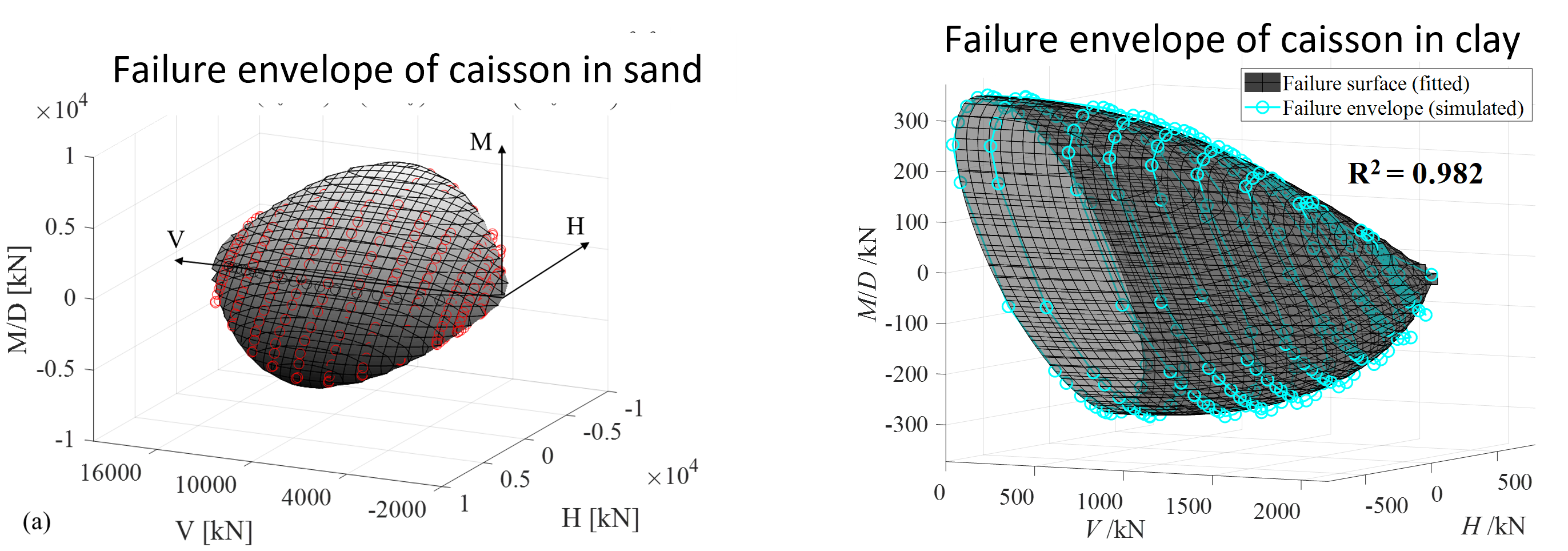
- Yin Z-Y, Teng JC, Li Z, Zheng YY (2020). Modelling of suction bucket foundation in clay: from finite element analyses to macro-elements, Ocean Eng., 210: 107577.
- Jin Z, Yin Z-Y, Kotronis P, Li Z, Tamagnini C (2019). A hypoplastic macroelement model for a caisson foundation in sand under monotonic and cyclic loadings. Marine Structures, 66: 16-26.
- Peng, M., & Yin, Z. Y. (2024). An elastoplastic model for predicting kinematics and trajectories of suction-embedded plate anchors under eccentric loading in clay. Journal of Geotechnical and Geoenvironmental Engineering, 150(6), 04024044.
- Peng, M., Yin, Z. Y., & Zhai, W. (2025). A New Associative Yield Function for Suction-Embedded Plate Anchors in Undrained Clay. Journal of Geotechnical and Geoenvironmental Engineering, 151(2), 04024161.
RETURN

